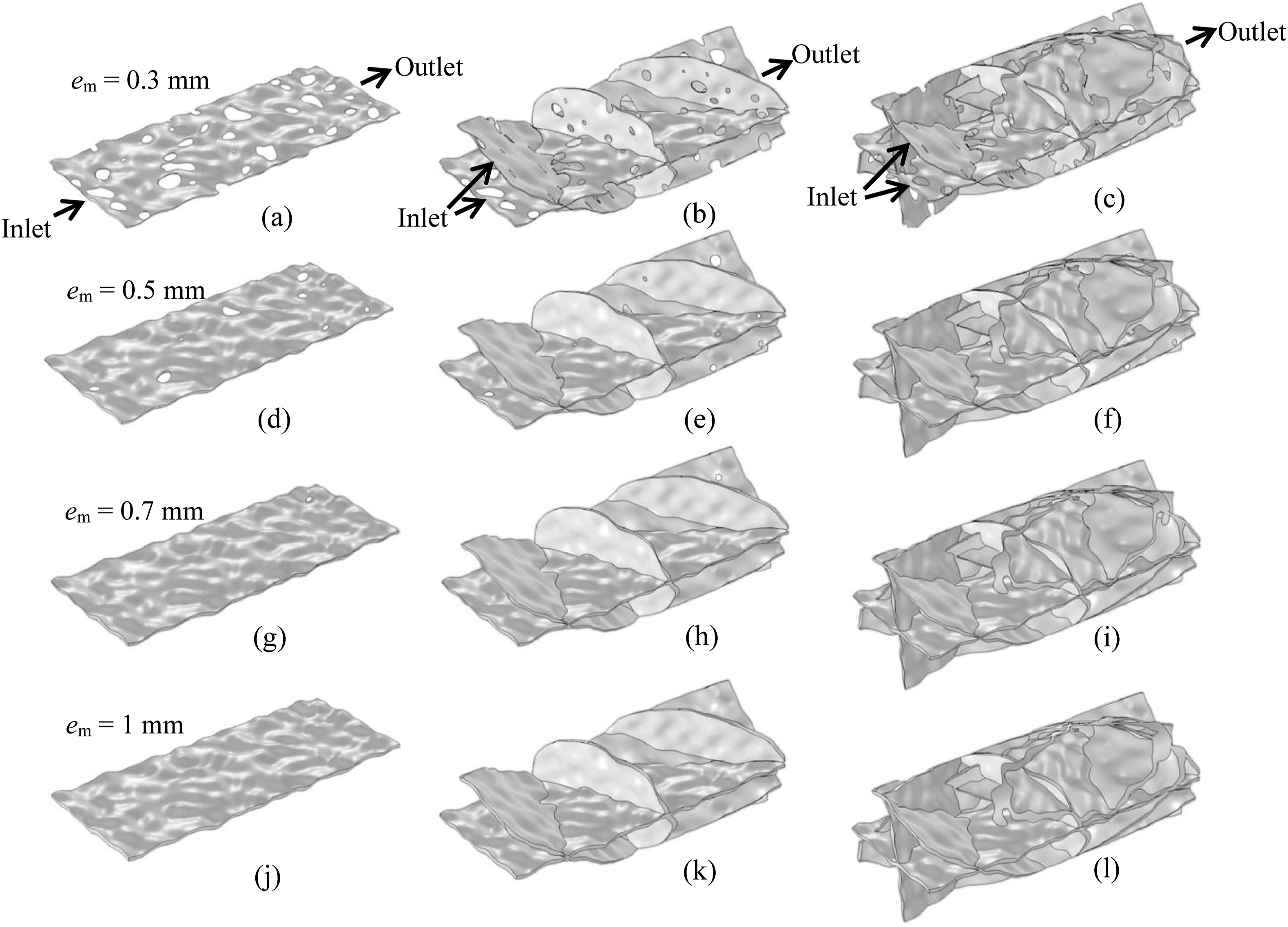JRMGE / Vol 13 / Issue 5
Nonlinear fluid flow through three-dimensional rough fracture networks: Insights from 3D-printing, CT-scanning, and high-resolution numerical simulations
Bo Li, Jiafei Wang, Richeng Liu, Yujing Jiang
Show More
a Key Laboratory of Rock Mechanics and Geohazards of Zhejiang Province, Shaoxing University, Shaoxing, 312000, China
b State Key Laboratory for Geomechanics and Deep Underground Engineering, China University of Mining and Technology, Xuzhou, 221116, China
c School of Engineering, Nagasaki University, Nagasaki, 852-8521, Japan
2021, 13(5): 1020-1032. doi:10.1016/j.jrmge.2021.04.007
Received: 2020-12-07 / Revised: 2021-02-22 / Accepted: 2021-04-15 / Available online: 2021-06-18
2021, 13(5): 1020-1032.
doi:10.1016/j.jrmge.2021.04.007
Received: 2020-12-07
Revised: 2021-02-22
Accepted: 2021-04-15
Available online: 2021-06-18
Nonlinear flow behavior of fluids through three-dimensional (3D) discrete fracture networks (DFNs) considering effects of fracture number, surface roughness and fracture aperture was experimentally and numerically investigated. Three physical models of DFNs were 3D-printed and then computed tomography (CT)-scanned to obtain the specific geometry of fractures. The validity of numerically simulating the fluid flow through DFNs was verified via comparison with flow tests on the 3D-printed models. A parametric study was then implemented to establish quantitative relations between the coefficients/parameters in Forchheimer's law and geometrical parameters. The results showed that the 3D-printing technique can well reproduce the geometry of single fractures with less precision when preparing complex fracture networks, numerical modeling precision of which can be improved via CT-scanning as evidenced by the well fitted results between fluid flow tests and numerical simulations using CT-scanned digital models. Streamlines in DFNs become increasingly tortuous as the fracture number and roughness increase, resulting in stronger inertial effects and greater curvatures of hydraulic pressure-low rate relations, which can be well characterized by the Forchheimer's law. The critical hydraulic gradient for the onset of nonlinear flow decreases with the increasing aperture, fracture number and roughness, following a power function. The increases in fracture aperture and number provide more paths for fluid flow, increasing both the viscous and inertial permeabilities. The value of the inertial permeability is approximately four orders of magnitude greater than the viscous permeability, following a power function with an exponent α of 3, and a proportional coefficient β mathematically correlated with the geometrical parameters.
Keywords: Nonlinear flow, 3D-printing, CT-scanning, Fracture network, Permeability, Fluid flow test


